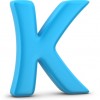The CT Angiogram is the latest in cardiac technological developments. Through new GE Lightspeed technology, with 64 bit computer processing, we are now for the first time able to perform an angiogram of the heart arteries without significantly invading the body!
What does it mean, and why is it important?
For years the gold standard for evaluating disease or plaque in the arteries of the heart, called coronary arteries, has been the angiogram. To do an angiogram, you are taken into an operating room at the hospital. An incision is made in your groin and a very long, approximately 36 inch catheter, is inserted into your groin up your aorta and into the heart arteries. Under x-ray fluoroscopy the doctor injects dyes through the catheter into your heart arteries and then takes Cine pictures. These pictures show plaque or blockage of the arteries and we can get an exact measurement of whether your arteries are completely open, 20% blocked, 50% blocked, 80% blocked, 95% blocked. Once an artery is over 90% blocked, there is significant risk for an immediate heart attack.
Because the traditional angiogram of this type is obviously very invasive and quite expensive, we have never been able to do this in a routine fashion.
Instead, over the last years, we have developed and now do an “indirect” test to evaluate if there is blockage in the coronary arteries. Specifically, tests that we have for this include the regular treadmill test, a stress echo test, and a nuclear stress test. Each of these tests attempts, through indirect measurements, to get an idea if there is a significant blockage in the arteries. However, each of these tests goes abnormal only when there is an approximately 70% or greater blockage of the artery. In other words, if you have a 60% blockage in an artery, these tests all look perfectly normal.
Obviously it would be very helpful to know if you have a 40, 50, 60, or 70% blockage, as it is a heads up that we must be more aggressive about medical management, including lowering cholesterol, so that the plaque does not progress to the point where invasive procedures or open heart by-pass surgery is required. However, the current level of technology until the recent CT Angiogram did not allow this information.
Approximately 7 years ago, the EBCT or Electronic Beam Computerized Tomography was developed, which was able to see calcified plaque in the coronary arteries. We have known all along that there are two types of plaque: the hard or calcified plaque and the soft plaque. We also know that the EBCT does not allow us to see the soft plaque at all, but this is the best test we have had and it allowed us to at least get a head’s up whether a person was significantly calcifying their arteries. People with high levels of plaque went on to more diagnostic studies to assure that they were not having a critical blockage, whether hard or soft plaque. But we were never able to get an estimate of the soft plaque because we could not see it with that technology.
Then within the last one year, new 64 bit computer technology, for the first time, has allowed us to actually get cross-sectional images of the coronary arteries. This shows both the hard and the soft plaque! Therefore with this CT angiogram, we are able to tell you if you have a 10, 20, 30, 50, 70, 80 or 90 plus percent blockage. This non-invasive technology correlates very highly with the hospital angiogram that I described above. The beauty of the new technology is that it is a minimally invasive test. Specifically, only an IV is started on your arm. Dye is then injected through the IV while you are under the scanner and the beautiful cardiac images showing all the coronary arteries in 3-dimensions emerge from the computer. The total time from when you first change your clothes at the doctor’s office until the time you put your clothes back on, is 30 minutes. At that time, you just go back to work. Results are usually available by the next day. Obviously this is a complete contrast to the hospitalization that is required (often with an overnight stay in the hospital) for a traditional angiogram. The time and expense involved in that is prohibitive for routine use.
Already this test has helped dramatically in the clinical care of my patients.
One 55 year old woman with a family history of heart disease (but absolutely no symptoms) underwent, on my suggestion, the CT Angiogram. To our shock it showed a 95% blockage in her left coronary artery. The next day we were able to take her into the hospital and open the 95% blockage with traditional angioplasty and stent placement and the patient was fine. Without this technology, this patient would have become a statistic, as sudden death was in her immediate future.
Another 48 year old entertainment executive came to me with chest pain. Clinically it seemed like musculo-skeletal, but given that it was going down his left arm, he was absolutely convinced it had to be cardiac. Once we did the tests to assure ourselves that it was not an acute heart attack, he underwent the CT Angiogram. Thirty minutes later we found his coronary arteries to be wide open. The amount of relief and happiness in his face and eyes on hearing this information was truly touching. By the next day, with a couple of Advils, his muscular-skeletal chest pain was resolved.
With all this information you can see why I am so excited about this new technology for helping my patients to get this critical information about the status of their heart. Since heart disease is the number one killer of men and women in America, I believe this test is the very best test we have for everybody over 50 and for those in their 40s with family histories of heart disease and high stress in their lives.
An additional benefit is if a person’s arteries show no significant blockage, they really don’t need any other diagnostic tests, such as treadmill tests for coronary artery disease, for some years. For all of these reasons, I highly recommend this test to my patients for whom it is relevant.
Insurance companies are starting to cover this test for people who have documented heart disease. Otherwise, patients must pay out of pocket. Please note that this test also includes the older Calcium Scan of the heart .
I also want all of my patients to know that the radiation from this test is equivalent to 100 chest x-rays. This sounds like a lot but in the scheme of things the benefit of knowing about your heart, in my opinion, far outweighs this radiation exposure.
I urge you to consider it for your individual situation.
About Dr. Soram Khalsa
As an MD, Dr Soram specializes in Integrative Medicine combining diet, nutrition, acupuncture, herbs and nutrition. Visit Dr Soram’s Healthy Living Store where you’ll find high-quality nutritional supplements:





